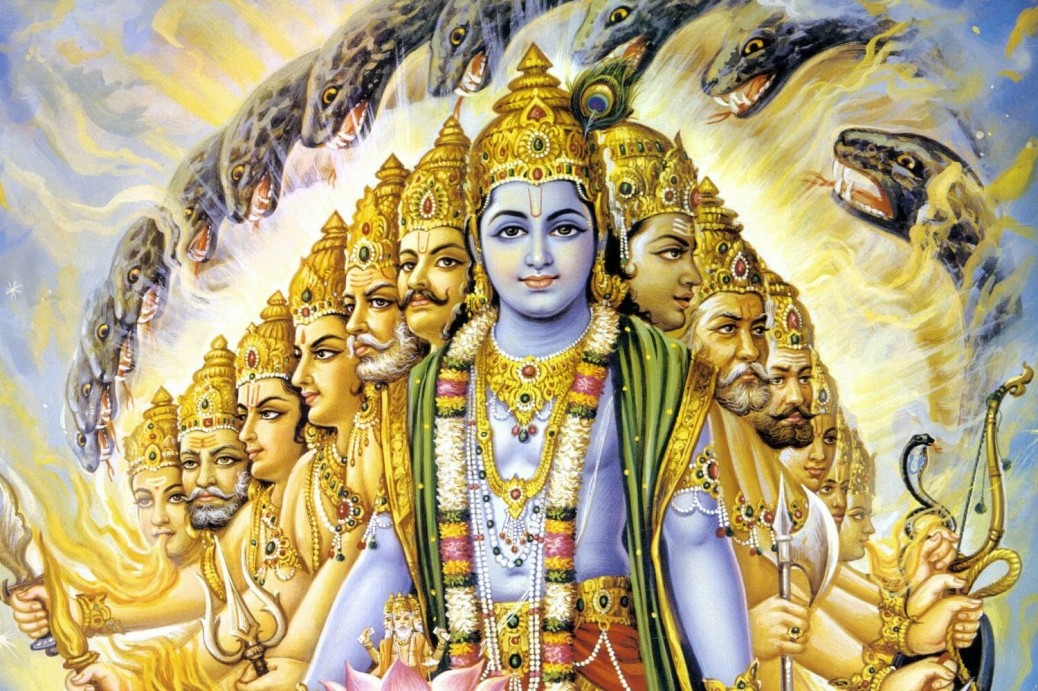Attachment And Aversion – In Gita Verse 3.34 There are principles to regulate attachment and aversion pertaining to the senses and their objects. One should not come under the control of such attachment and aversion, because they are stumbling blocks on the path of self-realisation.
The Bhagavad Gita, in Verse 3.34, emphasises the importance of regulating attachment and aversion related to the senses and their objects. This principle is crucial for avoiding obstacles on the path to self-realisation. In our daily lives, attachment and aversion manifest through the dual experiences of pleasure and pain, which are inherent in all sensory interactions. The world, as we perceive it, is fundamentally dualistic, with every experience having its opposite. This duality is akin to the architectural concept of tension in structures, where opposing forces create stability. Just as a building relies on the tension between opposing forces to stand, life is constructed on the interplay of opposites such as happiness and sorrow, love and hatred, attachment and detachment.
Understanding this duality is essential for navigating life effectively. The presence of duality is evident in all aspects of existence, including the natural phenomena around us. For instance, electricity requires both positive and negative poles to function. Similarly, the existence of genders, male and female, depends on their inherent duality. This duality is a fundamental aspect of life, and attempting to eliminate one side of it is futile.
Krishna advises Arjuna to recognise that sensory experiences are inherently dualistic. Pleasure is always followed by pain, and vice versa. This cyclical nature is akin to the ocean’s waves, where each crest is followed by a trough. Similarly, in life, every high is accompanied by a low. The wise understand this interplay and remain detached, recognising that both states are temporary and do not define their true self.
Psychologists have long noted that humans often attempt to preserve one aspect of duality while ignoring the other, which is an impossible endeavour. For instance, one cannot truly love without the capacity for hate. Both emotions are interconnected, and denying one limits the full experience of the other. Similarly, forgiveness is only meaningful when one has experienced anger. The wise individual accepts both sides of duality, understanding that they are integral to the human experience.
Krishna’s teachings encourage embracing both pleasure and pain without becoming attached to either. This acceptance allows individuals to transcend the limitations of duality and act from a higher nature. By not succumbing to the likes and dislikes of the mind and senses, one can overcome lower nature and achieve true freedom.
In practical terms, engaging with the world involves immersing oneself in sensory experiences without forming attachments or aversions. For example, when listening to music, one should fully embrace the experience, allowing it to flow through without judgement. This comprehensive engagement fosters a heightened sense of awareness and tranquillity that surpasses the sensory experience itself. As long as one remains connected to this awareness, emotions such as anger, hatred, and anxiety are absent from their actions, while a prayerful heart and the fragrance of love remain present.
The serenity that emerges from such engagement is comparable to meditation, where individuals experience profound emptiness and detachment from desires. This state of being enables one to perceive the silent music of Aum, symbolising ultimate truth and inner peace. Achieving this state does not require chanting or external actions; rather, it is attained through inner stillness and the absence of thought.
Ultimately, the journey towards this state of awareness involves a conscious effort to remain present in each moment. By doing so, individuals cultivate a deeper connection with their surroundings and themselves, fostering a sense of calmness and clarity. This mindful approach not only enriches personal experiences but also promotes a harmonious existence, where actions are guided by love and a prayerful heart.
Self-realised individuals, as described by Krishna, do not become attached to their senses. Instead, they use their senses to grow in consciousness, achieving self-realisation through their experiences. This approach involves becoming empty of judgments and identifications, allowing for a deeper connection with the self and the world.
Bhagavad Gita Verse 3.34 teachings on attachment and aversion provide valuable insights into achieving self-realisation. By recognising and accepting the duality inherent in life, individuals can transcend the limitations of sensory experiences and attain a higher state of consciousness. This path requires a conscious effort to engage with the world fully while maintaining detachment, ultimately leading to inner peace and self-awareness.
Tags: Attachment And Aversion




